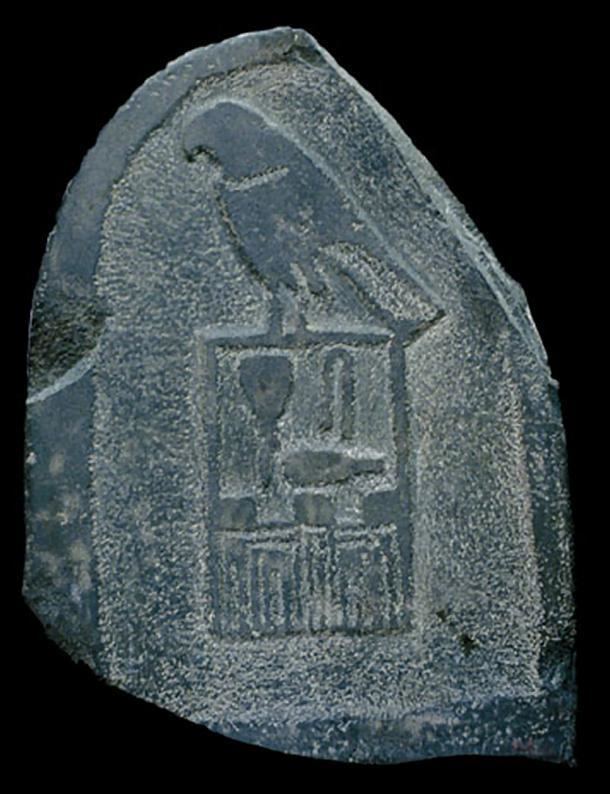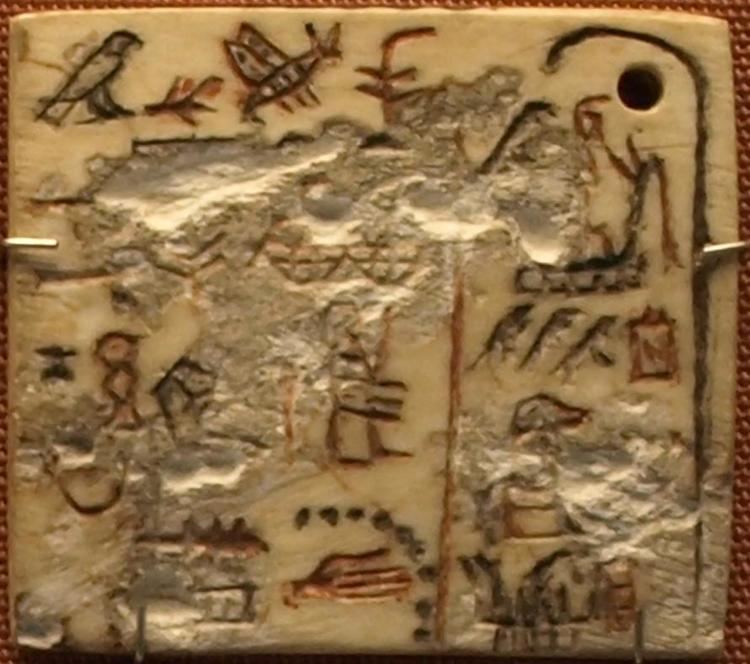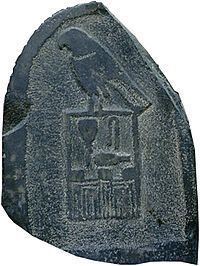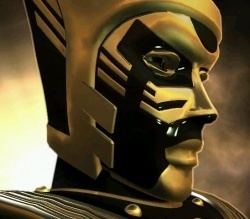Burial Tomb U, Umm el-Qa'ab Buried Umm El Qa'ab, Egypt Children Qa'a Grandparents Den, Seshemetka | Died 2960 BC Parents Anedjib Grandchild Perneb | |
 | ||
Reign 8½ years, ca. 2920 BC (1st Dynasty) Similar | ||
Semerkhet is the Horus name of an early Egyptian king who ruled during the 1st dynasty. This ruler became known through a tragic legend handed down by ancient Greek historian Manetho, who reported that a calamity of some sort occurred during Semerkhet's reign. The archaeological records seem to support the view that Semerkhet had a difficult time as king and some early archaeologists even questioned the legitimacy of Semerkhet's succession to the Egyptian throne.
Contents
- Let s play tr iv tlr nivel 10 la tumba de semerkhet part 2 la p m quina me gana 12
- Length of reign
- Identity
- Reign
- Tomb
- References

Let s play tr iv tlr nivel 10 la tumba de semerkhet part 2 la p m quina me gana 12
Length of reign

Manetho named Semerkhet Semêmpsés and credited him with a reign of 18 years, whilst the Royal Canon of Turin credited him with an implausibly long reign of 72 years. Egyptologists and historians now consider both statements as exaggerations and credit Semerkhet with a reign of 8½ years. This evaluation is based on the Cairo Stone inscription, where the complete reign of Semerkhet has been recorded. Additionally, they point to the archaeological records, which strengthen the view that Semerkhet had a relatively short reign.
Identity

Virtually nothing is known about Semerkhet's family. His parents are unknown, but it is thought that one of his predecessors, king Den, might have been his father. Semerkhet was possibly born to queen Betrest. On the Cairo Stone she is described as his mother. Definite evidence for that view has not yet been found. It would be expected that Semerkhet had sons and daughters, but their names have not been preserved in the historical record. A candidate for a possible member of his family line is his immediate successor, king Qa'a.
Reign
An old theory, supported by Egyptologists and historians such as Jean-Philippe Lauer, Walter Bryan Emery, Wolfgang Helck and Michael Rice once held that Semerkhet was a usurper and not the rightful heir to the throne. Their assumption was based on the observation that a number of stone vessels with Semerkhet's name on them were originally inscribed with king Adjib's name. Semerkhet simply erased Adjib's name and replaced it with his own. Furthermore, they point out that no high official and priest associated with Semerkhet was found at Sakkara. All other kings, such as Den and Adjib, are attested in local mastabas.
Today this theory has little support. Egyptologists such as Toby Wilkinson, I. E. S. Edwards and Winifred Needler deny the 'usurping theory', because Semerkhet's name is mentioned on stone vessel inscriptions along with those of Den, Adjib and Qa'a. The objects were found in the underground galleries beneath the step pyramid of (3rd dynasty) king Djoser at Sakkara. The inscriptions show that king Qa'a, immediate successor of Semerkhet and sponsor of the vessels, accepted Semerkhet as a rightful ancestor and heir to the throne. Furthermore, the Egyptologists point out that nearly every king of 1st dynasty had the habit of taking special vessels (so-called 'anniversary vessels') from their predecessor's tomb and then replace their predecessor's name with their own. Semerkhet not only confiscated Adjib's vessels, in his tomb several artifacts from the necropolis of queen Meritneith and king Den were also found. The lack of any high official's tomb at Sakkara might be explained by the rather short reign of Semerkhet. It seems that the only known official of Semerkhet, Henu-Ka, had survived his king: His name appears on ivory tags from Semerkhet's and Qaa's tomb.
Seal impressions from Semerkhet's burial site show the new royal domain Hor wep-khet (meaning "Horus, the judge of the divine community") and the new private household Hut-Ipty (meaning "house of the harem"), which was headed by Semerkhet's wives. Two ivory tags show the yearly 'Escort of Horus', a feast connected to the regular tax collections. Other tags report the cult celebration for the deity of the ancestors, Wer-Wadyt ("the Great White"). And further tags show the celebration of a first (and only) Sokar feast.
While the Cairo Stone reports the whole of Semerkhet's reign, unfortunately, the surface of the stone slab is badly worn and most of the events are now illegible. The following chart follows the reconstructions by Toby A. H. Wilkinson, John D. Degreef and Hermann Alexander Schlögl:
Cairo Stone, main fragment:
Egyptologists and historians pay special attention to the entrance "Destruction of Egypt" in the second window of Semerkhet's year records. The inscription gives no further information about that event. But it has a resemblance to the Manetho's report. The Eusebian version says: "His son, Semémpsês, who reigned for 18 years; in his reign a very great calamity befell Egypt." The Armenian version sounds similar: "Mempsis, 18 years. Under him many portents happened and a great pestilence occurred." None of the documents from after Semerkhet's reign provide any details about this "calamity".
Tomb
Semerkhet's burial site was excavated in 1899 by archaeologist and Egyptologist Sir William Matthew Flinders Petrie at Abydos and is known as "Tomb U". While excavating, Petrie found no stairways like he did at the necropolis of Den and Adjib. He found a ramp, four metres wide and leading straight into the main chamber. The ramp starts around ten metres east outside the tomb and has a base slope of 12°. Inside the tomb the ramp shows irregular graduations. Petrie was also confused by the small number of clay seals. Only 17 seals were found. For archaeologists and Egyptologists, the complete arrangement of the burial site looks like the builders were pressed for time. When Petrie freed the ramp from sand, he found that the complete ramp was thickly covered in aromatic oil, which still gave off a scent. Beside the ramp several wooden and hand-made baskets and earthen jars were found. These were dated to the Ramesside era. Scholars now think that Semerkhet's tomb was re-opened and restored when Ramesside priests and kings saw the tomb of king Djer as the ritual burial of Osiris's head. The findings inside the main chamber included precious objects such as inlays and fragments of furniture (especially pedestals), copper-made armatures and jewelry made of ebony, amethyst and turquoise. Some vessels originating from the Levant were also found. They once contained Bescha oil, which was of great value to the Egyptians. Outside the tomb, close to the entrance, a damaged tomb stela made of black granite displaying Semerkhet's serekh name was excavated.
The burial chamber measures 29.2 × 20.8 metres and is of simple construction. Petrie found that the king's mastaba once covered the whole of the subsidiary tombs. Now the royal burial formed a unit with the 67 subsidiary tombs. Egyptologists such as Walter Bryan Emery and Toby Wilkinson see this architectural development as proof that the royal family and household were killed willingly when their royal family head had died. Wilkinson goes further and thinks that Semerkhet, as the godlike king, tried to demonstrate his power over the death and life of his servants and family members even in their afterlife. The tradition of burying the family and court of the king when he died was abandoned at the time of king Qaa, one of the last rulers of the 1st dynasty. The tombs of 2nd dynasty founder Hotepsekhemwy onward have no subsidiary tombs.
